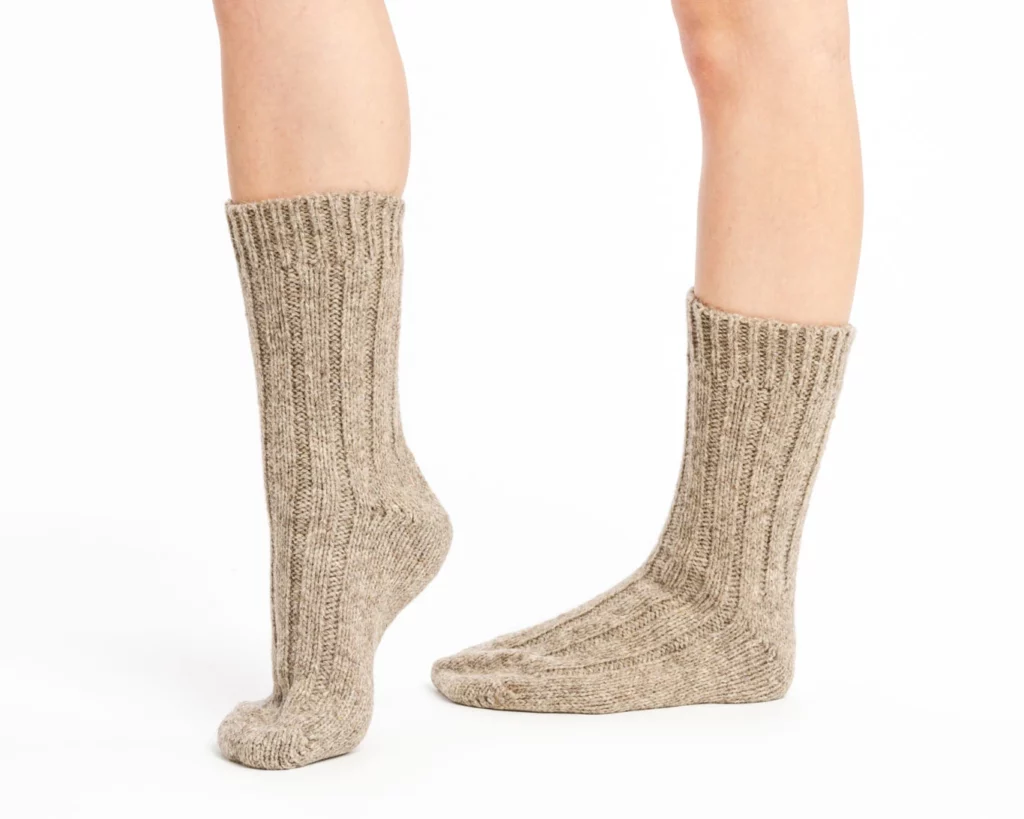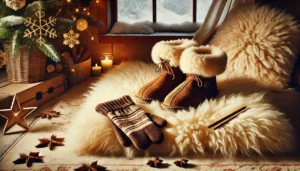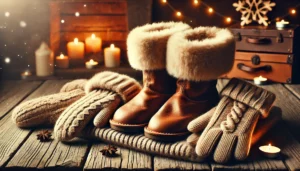18. The Best Slippers for Seniors: Why Sheepskin Outshines the Rest
The Best Slippers for Seniors Optimal Footwear Choices: The Best

In a world where climate conditions vary dramatically and sustainability becomes an ever more pressing concern, investing in warm clothes is not only a practical decision but also an investment in long-term comfort and environmental responsibility. Warm clothes have been an essential aspect of human civilization, providing protection against harsh weather while allowing individuals to engage in daily activities regardless of the climate. This article will explore the significance of warm clothes, the unique qualities that make them indispensable, and why they should be considered an essential investment for both comfort and sustainability.
Warm clothes have been crucial to human survival since prehistoric times. Early humans depended on animal skins and furs to protect themselves from the cold. As civilizations advanced, so did the techniques for creating warm garments. From the woolen tunics of ancient Greece to the fur-lined cloaks of medieval Europe, warm clothes have always been more than just a necessity; they have been a reflection of cultural identity and technological progress.
In colder regions, the development of specialized warm clothes allowed populations to thrive in environments that would otherwise be inhospitable. The Inuit people, for example, created insulated clothing from animal hides and fur, enabling them to live in the Arctic. Similarly, in the mountainous regions of Central Asia, the use of yak wool and other natural fibers has been integral to the survival of communities in extreme cold.
Warm clothes are distinguished by several key qualities that make them indispensable during colder months. These include insulation, breathability, moisture-wicking properties, and durability. These attributes are not only essential for maintaining body temperature but also for ensuring comfort and long-term wear.

The primary function of warm clothes is to provide insulation against the cold. Insulation works by trapping body heat and preventing it from escaping into the colder external environment. Natural fibers such as wool and down are particularly effective at insulation. Wool, for instance, has crimped fibers that create air pockets, which trap heat close to the body. Down, which comes from the soft under feathers of birds, is known for its excellent warmth-to-weight ratio, making it ideal for lightweight yet warm clothing.
Synthetic materials like fleece and Thinsulate™ have also been developed to provide high levels of insulation. These materials are often used in conjunction with natural fibers to create garments that offer superior warmth and comfort.
While insulation is crucial, breathability is equally important in warm clothes. Breathable fabrics allow moisture, such as sweat, to escape from the body, preventing the accumulation of dampness that can lead to discomfort and even hypothermia in extreme conditions. Wool, once again, excels in this area due to its ability to absorb moisture while still retaining warmth.
Modern textiles have also incorporated breathability into their designs. For example, Gore-Tex® is a material commonly used in outdoor clothing that combines waterproofing with breathability, ensuring that the wearer stays dry both from external elements and internal perspiration.
Warm clothes that can wick moisture away from the body are essential for maintaining dryness and comfort. Moisture-wicking fabrics pull sweat away from the skin and allow it to evaporate quickly, which helps to regulate body temperature. This is particularly important in cold environments where wet clothes can rapidly lead to a dangerous drop in body temperature.
Merino wool is renowned for its moisture-wicking properties, making it a popular choice for base layers worn close to the skin. Synthetic fibers such as polyester are also widely used in activewear due to their ability to wick moisture effectively.
Investing in warm clothes made from durable materials ensures that they will last for many seasons, providing long-term value. Durable fabrics can withstand the wear and tear of regular use, as well as the harsh conditions often encountered in cold weather. Wool, for example, is naturally resistant to stretching, shrinking, and wrinkling, making it a long-lasting option for winter garments.
In addition to the durability of the materials themselves, the construction of warm clothes is also a key factor in their longevity. High-quality stitching, reinforced seams, and carefully designed features such as wind flaps and storm cuffs all contribute to the overall durability of the garment.
As sustainability becomes increasingly important in consumer choices, warm clothes made from sustainable materials and produced through ethical processes offer a way to stay warm while minimizing environmental impact. Choosing garments made from natural fibers, recycled materials, and those produced by environmentally responsible companies can significantly reduce one’s carbon footprint.
Natural fibers such as wool, cotton, and down are renewable resources that can be harvested without depleting the earth’s natural reserves. Wool, in particular, is a sustainable fiber that grows back annually on sheep, making it an environmentally friendly choice for warm clothes. Additionally, wool is biodegradable, meaning it will break down naturally at the end of its life cycle, unlike synthetic fibers that may contribute to landfill waste.
Innovative companies are also developing new sustainable materials, such as recycled wool and down, as well as synthetic fabrics made from recycled plastics. These materials provide the same warmth and comfort as their traditional counterparts while reducing waste and promoting sustainability.
The production of warm clothes also plays a significant role in their overall environmental impact. Ethical production practices, including fair wages, safe working conditions, and environmentally friendly manufacturing processes, ensure that the garments are made responsibly. Consumers can look for certifications such as Fair Trade, Responsible Wool Standard (RWS), and Global Organic Textile Standard (GOTS) to ensure that their warm clothes are produced ethically and sustainably.
Investing in high-quality warm clothes that last for many years is another way to reduce environmental impact. Fast fashion, characterized by cheaply made garments that are quickly discarded, contributes significantly to environmental degradation. By choosing durable, well-made warm clothes, consumers can reduce the frequency of replacements, thus decreasing their overall consumption and waste.
In modern society, warm clothes are more than just practical garments; they are also a reflection of personal style and a means of expressing individuality. From fashion runways to outdoor adventures, warm clothes play a crucial role in both everyday life and specialized activities.
Warm clothes have become a staple in the fashion industry, with designers creating winter collections that combine functionality with style. From chic wool coats to trendy down jackets, warm clothes allow individuals to stay fashionable even in the coldest weather. The versatility of warm clothes means they can be dressed up or down, making them suitable for both casual and formal occasions.
Accessories such as scarves, hats, and gloves also play an important role in winter fashion. These items not only provide additional warmth but also allow individuals to add a personal touch to their outfits. The wide range of materials, colors, and designs available means that there is something to suit every taste and preference.
For those who enjoy outdoor activities, warm clothes are essential for staying safe and comfortable in cold environments. Whether skiing in the mountains, hiking in the wilderness, or camping in the snow, the right warm clothes can make all the difference. Technical gear designed for extreme conditions often incorporates advanced materials and features, such as waterproofing, wind resistance, and thermal insulation, to provide maximum protection.
Layering is a key concept in outdoor clothing, with base layers, mid-layers, and outer layers each serving a specific purpose. Base layers wick moisture away from the skin, mid-layers provide insulation, and outer layers protect against wind and water. By combining these layers, individuals can adjust their clothing to suit varying conditions, ensuring they stay warm and dry throughout their adventures.
As technology continues to advance, the future of warm clothes looks promising, with innovations that enhance both their functionality and sustainability. From smart textiles to eco-friendly materials, the next generation of warm clothes will offer even greater comfort and protection.
Smart textiles, which incorporate electronic components into fabrics, are an exciting development in the field of warm clothes. These textiles can provide additional warmth through heating elements, monitor body temperature, or even adjust insulation levels based on environmental conditions. Wearable technology is also being integrated into warm clothes, allowing for features such as GPS tracking, health monitoring, and connectivity with other devices.
These innovations not only improve the performance of warm clothes but also offer new ways to enhance personal safety and convenience, particularly in extreme conditions.
Sustainability will continue to be a driving force in the development of warm clothes. As consumers become more conscious of their environmental impact, there will be increased demand for garments made from sustainable materials and produced through ethical practices. Companies that prioritize sustainability in their supply chains, from the sourcing of raw materials to the manufacturing and distribution processes, will be at the forefront of this movement.
The use of recycled materials, the development of biodegradable fabrics, and the adoption of circular economy principles, where products are designed for longevity and recyclability, will all contribute to the creation of warm clothes that are both high-performing and environmentally responsible.
In conclusion, warm clothes are an essential investment for anyone seeking comfort, durability, and sustainability. Their ability to provide insulation, breathability, moisture-wicking properties, and long-lasting wear makes them indispensable during the colder months. Furthermore, the environmental benefits of choosing sustainable and ethically produced warm clothes cannot be overstated.
Whether for everyday wear, outdoor adventures, or fashion statements, warm clothes offer a perfect blend of practicality and style. As technology and sustainability continue to shape the future of clothing, investing in high-quality warm garments will ensure that you are well-prepared for whatever the weather may bring, while also making a positive impact on the environment.
The Best Slippers for Seniors Optimal Footwear Choices: The Best

A quality sheepskin rug is more than just a decorative

Leather products have long been revered for their combination of